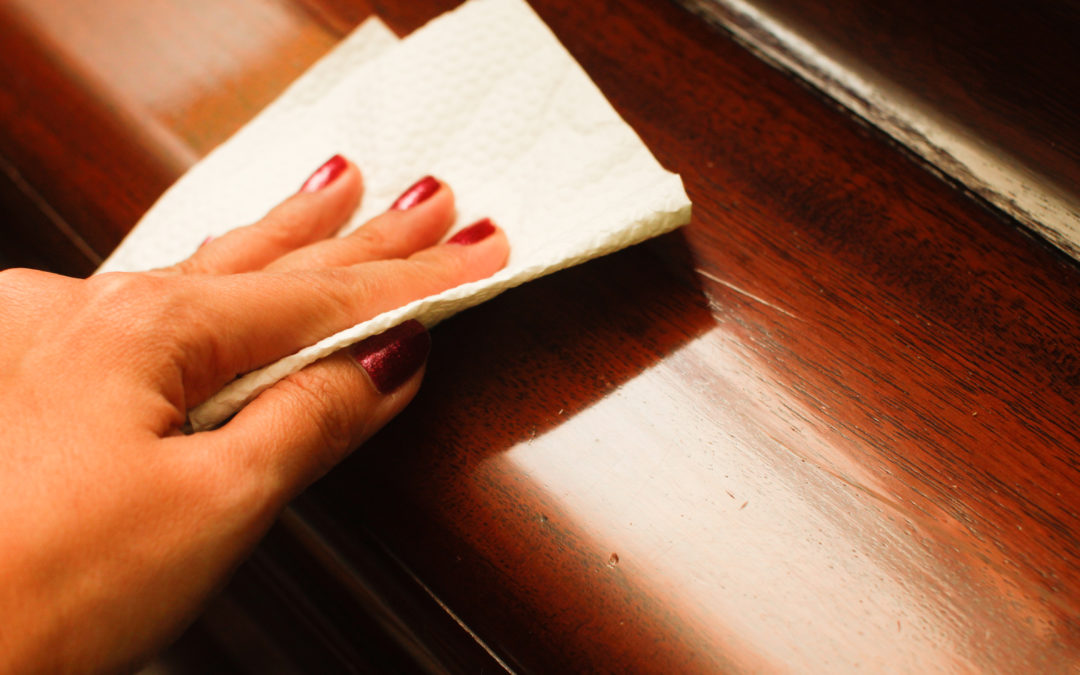
by Montie Mahtani | Oct 14, 2018 | Design Tips, Home Upkeep
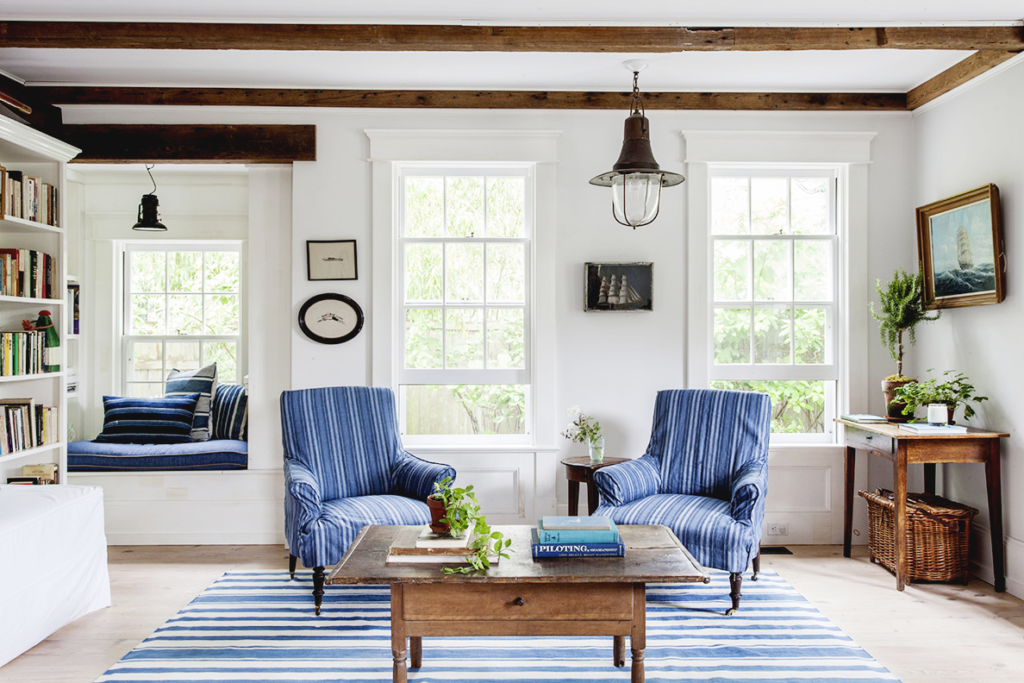
Source: Loony
Six Ways for Taking Care of Wood Furniture
Have you been thinking about adding unique vintage charm to your condo? I mean, you have seen a lot of interior design works in Singapore and you love every bit of design made with wooden furniture. Now you are thinking of buying some for your condo, or you have already made the purchase. Well, how about we tell you some important tips you should know about taking care of wooden furniture?
One truth about quality wooden furniture is that it can last for a lifetime and through many generations. So, if, for your new wood furniture, you would like to keep them as heirlooms for your children and grandchildren, the onus lies on you to take care and maintain the furniture. Even the best quality wood is not resistant to scratch and abrasions. So, check out these amazing tips for maintaining your wood furniture.
1. Dust regularly.
You should have a piece of soft, dry cotton cloth specifically for your wood furniture and you should dust them every time you notice they are getting dusty. It feels like a lot of work already, right? It is a worthy sacrifice. Don’t you love the shiny look your furniture has? Dusting makes it possible and if you can dust your tables, sofas, cabinets, etc. on a weekly or bi-weekly basis, no dust will have anything on you.
2. Set up away from sunlight.
Prolonged sunlight is not friendly to wooden furniture at all. If wood is exposed to sunlight for a long time, it has an effect called “spotting.” Spotting is the appearance of dark and bright spots on the wood. If there is too much light exposure in your condo and your table takes on the most of this sunlight, you can either have dark curtains or use a tablecloth to protect the table and mitigate the effects of the sunlight. The type of curtain you use in your home is important so, make sure you pick a suitable one.
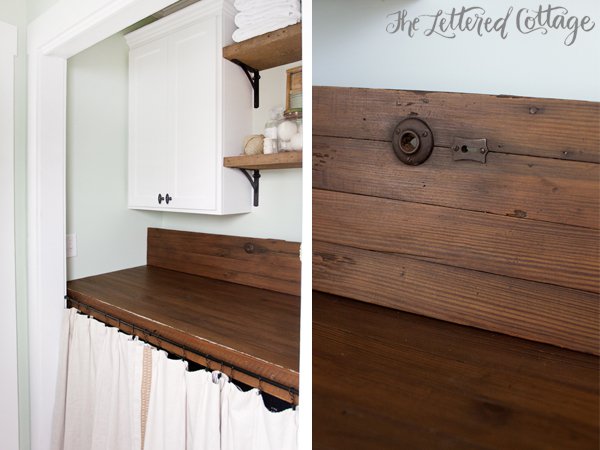
Source: The Lettered Collage
3. Monitor the temperature your furniture comes in contact with.
Always keep the temperature in your home cool and avoid placing too hot and cold items on wooden furniture. You do not want to get the surface texture distorted. If at all, you must put hot or cold things on your wood furniture, make sure it is not exposed for too long.
4. Keep sharp objects away.
A scratch on wood never looks good, and it does not disappear so easily. You must make sure sharp objects are not left lying around your furniture. Always have a small jar of a wood-filler that matches the wood colour, just in case a scratch happens.
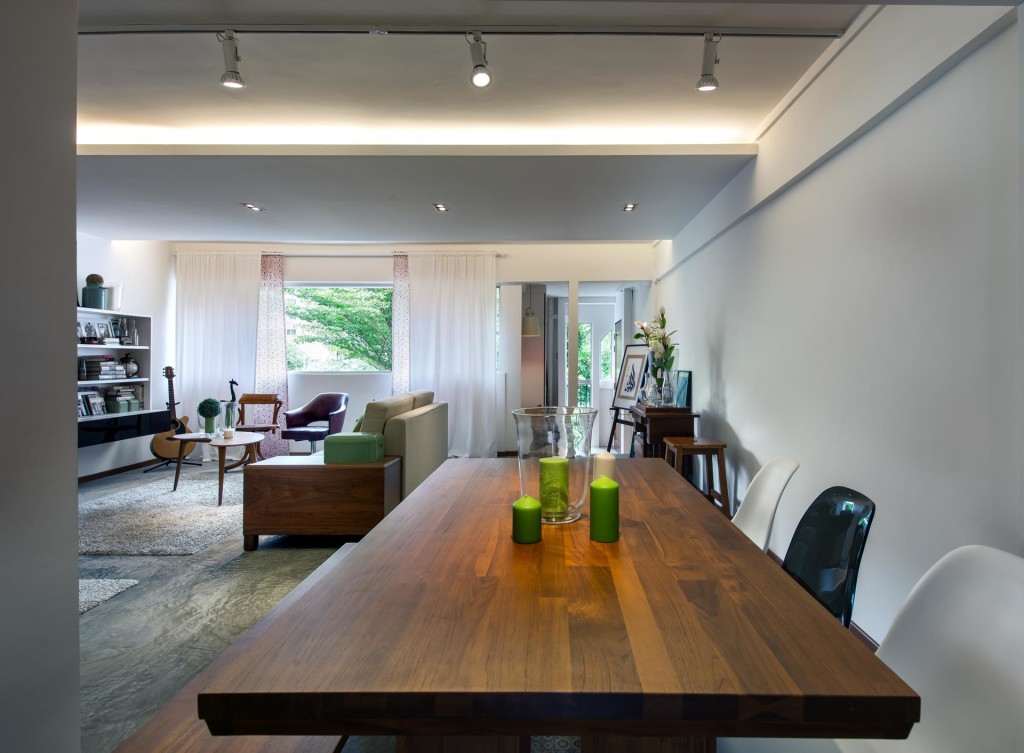
5. Wax and Oil Regularly.
To maintain the shiny appearance of your wooden furniture, regular oiling and waxing work wonders. Do this once in three months to maintain a classic-looking modern condo interior design.
6. Clean with warm water.
Apart from dusting, warm water and mild dish soap should be used to clean your wooden furniture. Clean until you get rid of the dust entirely and wipe with a dry cloth afterward. You can also purchase wood polishing agents to clean and bring back that shine every few months.
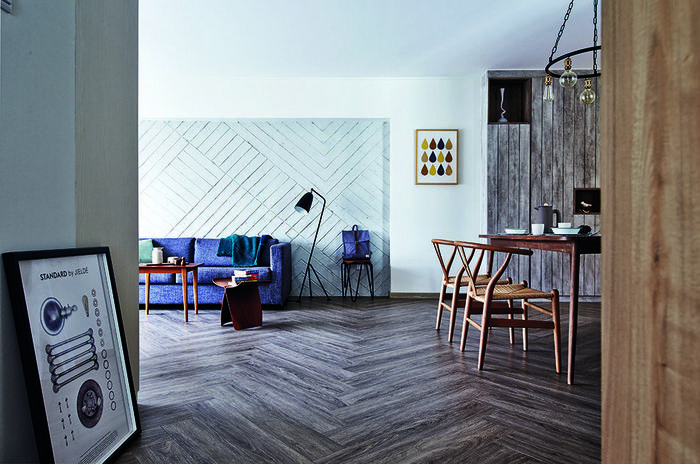
by Montie Mahtani | Oct 31, 2017 | Design Tips, Home Upkeep
The interior designer, just like any specialised career path, has a price tag attached to it. In a very competitive industry, it is extremely hard for an designer to justify charging significantly higher than the average rates.
There are a few reasons for having a cost blow out astronomically that goes beyond the designer’s fees.
- Home owners have unique requirements.
An interior designer’s job is to build a productive living area for you that is catered for your needs. Sometimes these needs and the space available make it a challenge for the designer and he has to spend nights mulling over how to be creative with what he has. The more challenging the demands, the more creative the designer has to be, and such a feat can take days of research and weeks of testing the proof of concept before execution.
- Expensive taste in material types
You are a person of exquisite taste and your home must reflect that all the way down to the nails and rivets. Imported items are generally a lot more expensive because of availability and cost of shipment. Some of these products are so unique that they must be customized, and such bespoke solutions are always going to be costlier.
- Complicated designs.
Love that herringbone fall tile design? Sure, it does look so stylish and chic, but such designs come with a high price tag, especially in Singapore when the tasks require manual labour. The longer the task is, the higher the price tag. Hacking of walls and retiling of floor tiles are other areas that usually builds up the cost factor.
So the next time you’re planning for a house, you know the areas to look out for that would probably bust a hole in your pocket. A small area doesn’t necessarily mean it’s going to cost less. Always check with your designer on ways you can save money without compromising look and quality. Most times, it’s always easier to be forthcoming with your comfortable budget. Drop us a message if you need to speak to someone who you can trust.
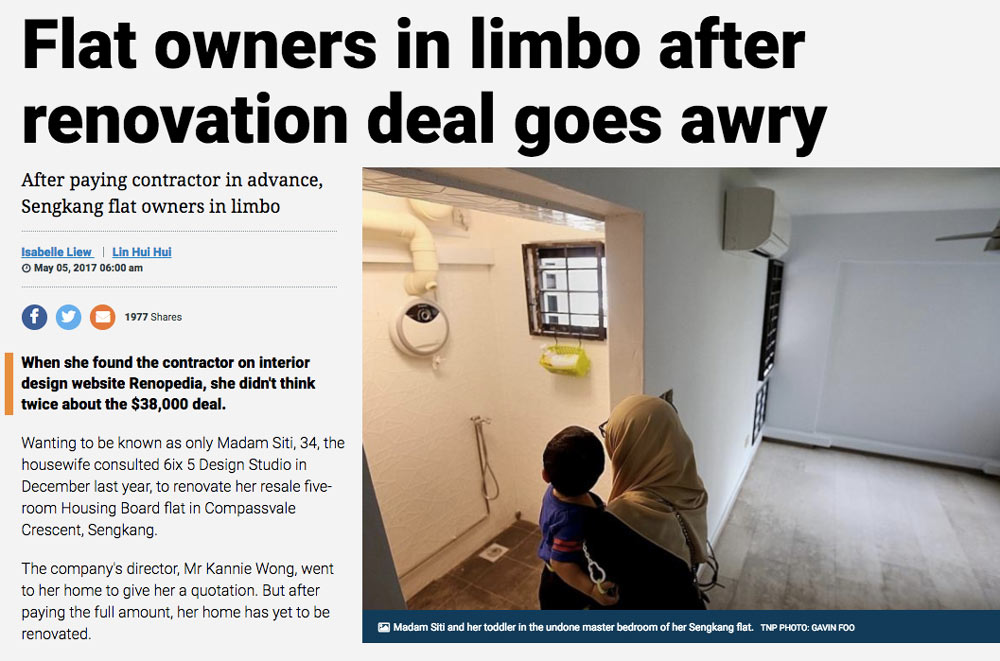
by Montie Mahtani | Oct 10, 2017 | Design Tips, Home Upkeep
You have probably heard horror stories about the renovation industry and disgruntled homeowners having to fork out even more money to repair the shoddy workmanship. News like these is prevalent and unfortunate homeowners are usually left with little avenue for redress but to vent their frustration on the internet. Such rampant negative business practices give all of us legit businesses a bad name.
Here are 3 tell tale signs that you are about to get into a bad deal.
- Lowest Cost
Who doesn’t love a good deal? The problem with deals too good to be true is that it usually isn’t. The marketplace is extremely competitive with profit margins constantly being reduced. As professionals, we immediately know something is amiss when the price quoted by a competitor is remarkably lower. This could only mean one thing – cost cutting is going to happen where customers can’t see. On the onset, you may think you have gotten a good deal, but when the faults start to appear in the months that follow, the contractor is uncontactable, and customers have to fork out another round of money for repairs.
- Contractor or Designer
Designers by virtue of their expertise and effort that comes from project management come with a slightly higher price tag than a contractor. You can think of an interior designer as the architect of the building. Who would you trust to handle the integrity of your renovation works? A designer know what to look out for, which measurement works, and where to lay cables and how many light points is required, etc. For customers who may not be aware of the intricacies that goes in the planning, it’s easy to fall prey to contractors who make bold promises just to close a deal.
- Attractive Package Deals
The way interior designers help you save cost is by providing you a template design with pre-measured fittings. That sounds reasonable doesn’t it? After all, most HDB have similar layout and you stand to gain some savings for using a common design. This would be fine if you have very simple requirements and aren’t the type to sweat a little misalignment or gaps in between fixtures. The thing about design is that, it’s the little things that make the difference. A good design is supposed to make you feel at ease, unconsciously. A badly designed room tends to make the occupant uneasy. And should you request for any changes to the package, that’s when the cost starts getting exorbitant.
If you still unsure about the deal you’re getting, come talk to us and let us help you keep an eye out for renovation pitfalls.

by Montie Mahtani | Jan 19, 2017 | Home Upkeep
Not many people have heard of Energy Vampires or are aware of its presence at home. M3 designers not only have your interior design interest at heart, we are also concerned about helping you live effectively in the home that we lovingly designed with you. You’re welcome.
Energy Vampires is what it’s commonly called but it also goes by two other terms – standby power and phantom load. Admittedly, “vampire” sounds a lot cooler. So what’s this Energy Vampire we speak of? It’s the electric power consumed by electronic devices when they are switched off (but still plugged in).
On average, a household has about 15 devices constantly plugged in at any given time. Have a look around your house; I’m guessing that there’s a least one hand phone charger hanging off the socket and the LED clock on your microwave is still flashing.
Before you rush around unplugging everything from its socket, let me give you some quick guide to shaving off the bills without the hassle on messing around with every single plugs in the house.

(Photo courtesy of pexels)
Devices with Digital Clock
The digital clock on your microwave may look innocuous but considering the number of times you use the microwave versus the number of hours the device is left idle, I daresay it consumes more electricity powering the clock than it does heating food. Coffee makers and ovens are the other two common culprits in the kitchen.

Computers and Entertainment Devices
You probably guessed it by now that the television, the cable box, game consoles, stereos and DVD players are all huge consumers of standby power. To mitigate this energy waste, hook up your entertainment system and related to power strips connected to a master switch. That way you can easily switch the whole system off when the family goes to bed or when everyone is out at work. According to industry experts, you can save a couple of hundreds a year if you keep up with this habit.
Hot Water Heater
This is an easy one. Turn off your water heater when not in use. Though most might be aware of this energy vampire, it still bears mentioning it as a reminder.
Smart Home Solutions
There are apps and products available in the market that will allow you to remotely control appliances like your air conditioning unit so that you don’t have to leave it running all day. Smart Home systems are able to connect to your mobile devices as well thus empowering you to save electricity and money at a touch of a button.

(Photo courtesy of pexels)
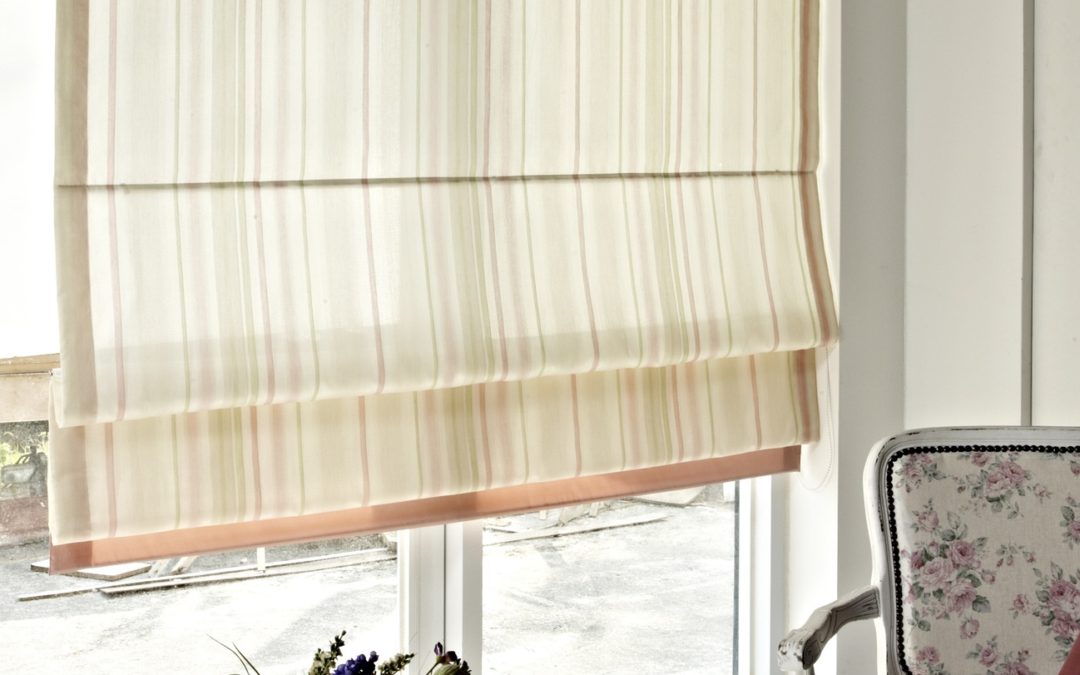
by Montie Mahtani | Aug 22, 2016 | Design Tips, Home Upkeep
We know: in Singapore, your HDB may be the size of a shoebox– but the quality your HDB interior design should never be compromised. Whether you’re looking to free up more space into your living room, or to declutter your bedroom for a mess-free rest, we’ve collated 6 space saving interior design hacks.
- Let there be light
Feel like your room is a little too dark and dingy? Maybe it’s your curtains. Some curtains block out a large amount of light. Avoid those and swap them out for light, material that will let in the light even when they’re drawn for privacy. Adding more light fixtures will also help in making your little home feel lighter, brighter, and more beautiful.
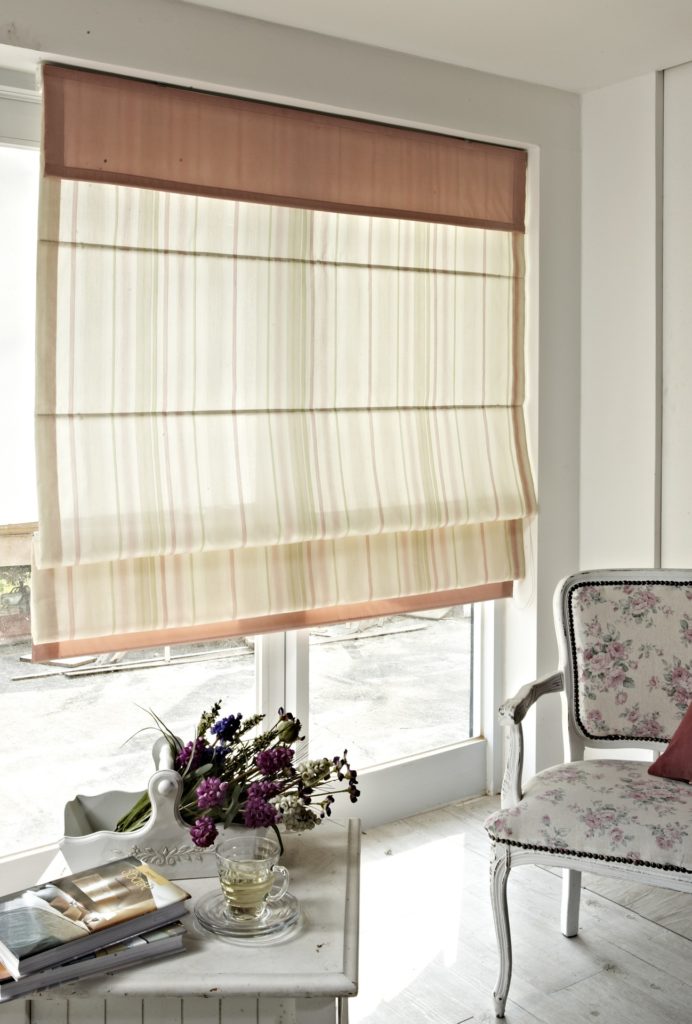
- Do double duty
Get flexible furniture that does more. In a small home like a HDB flat, furnishings with two or more functions can be a real lifesaver. Some pieces include ottoman seats that allow you to stow away any stray items, or foldaway beds that can be concealed to make way. While these might be a little more on the pricey side, consider these costs as the price for two items. The cost savings do add up, and you just might get your home dolled up for less.
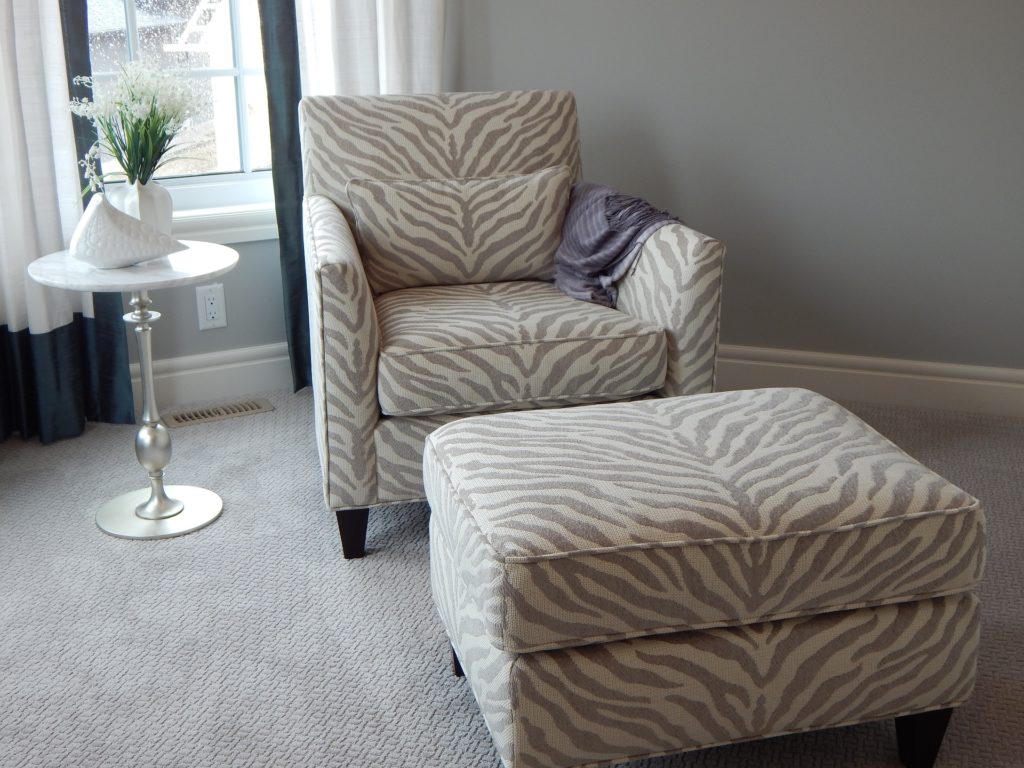
- Put up your pictures
While you might not have room to place more décor, you can certainly hang them up. Show off your personality by adding some artwork to your small space. Best of all, some hooks can be removed cleanly, so feel free to experiment without the commitment.
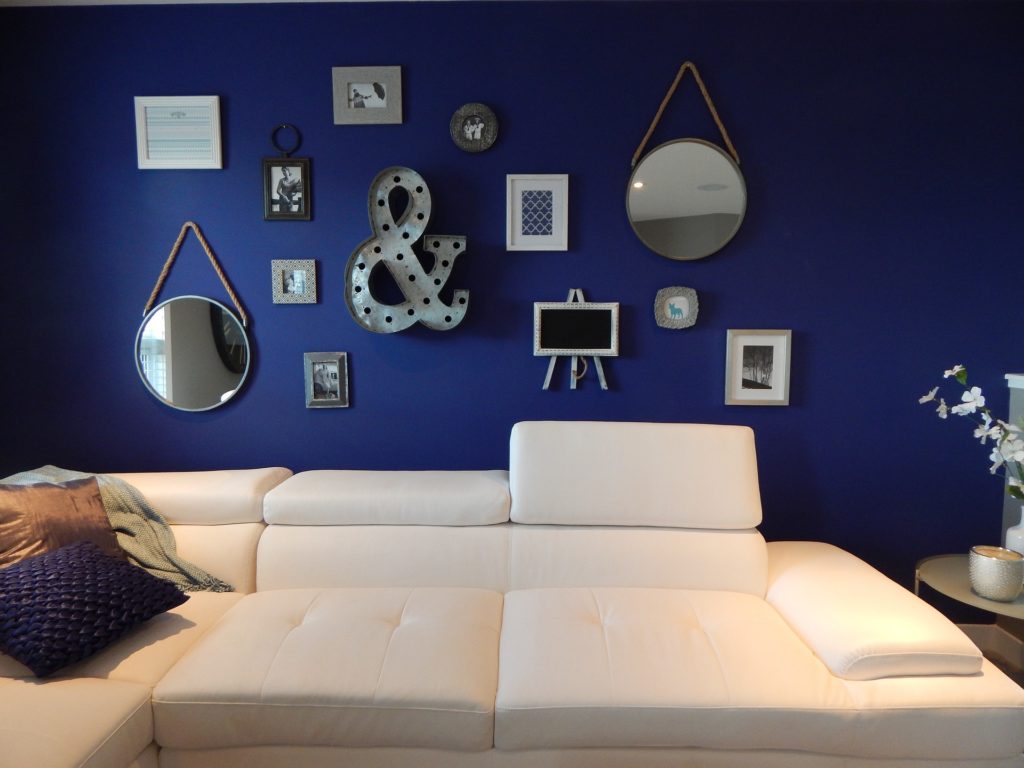
4. Pick something distinct
In a small space, décor displayed can make you feel like your home is in a mess. Cut down on the clutter and pick out a particular piece of furniture that speaks of your personality. Maybe it’s a bright red couch, a slouchy beanbag, or maybe even an avant-garde lamp.
Related: 5 Frugal Ways to Decorate Your Home
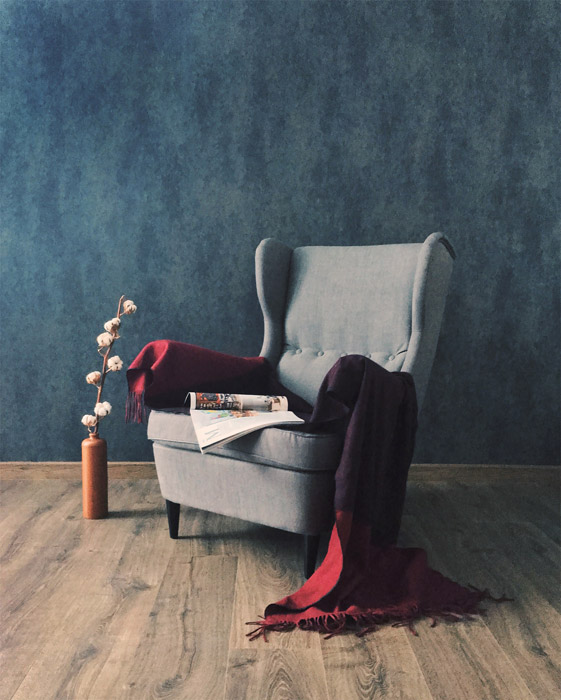
5. Don’t fear heights
Floor space is always restrictive in a small HDB interior design flat, so turn your attention upwards. Attach shelving to your walls to display any mementos and books. Or they could serve a more practical purpose like keeping Fido and Felix’s treats out of reach.
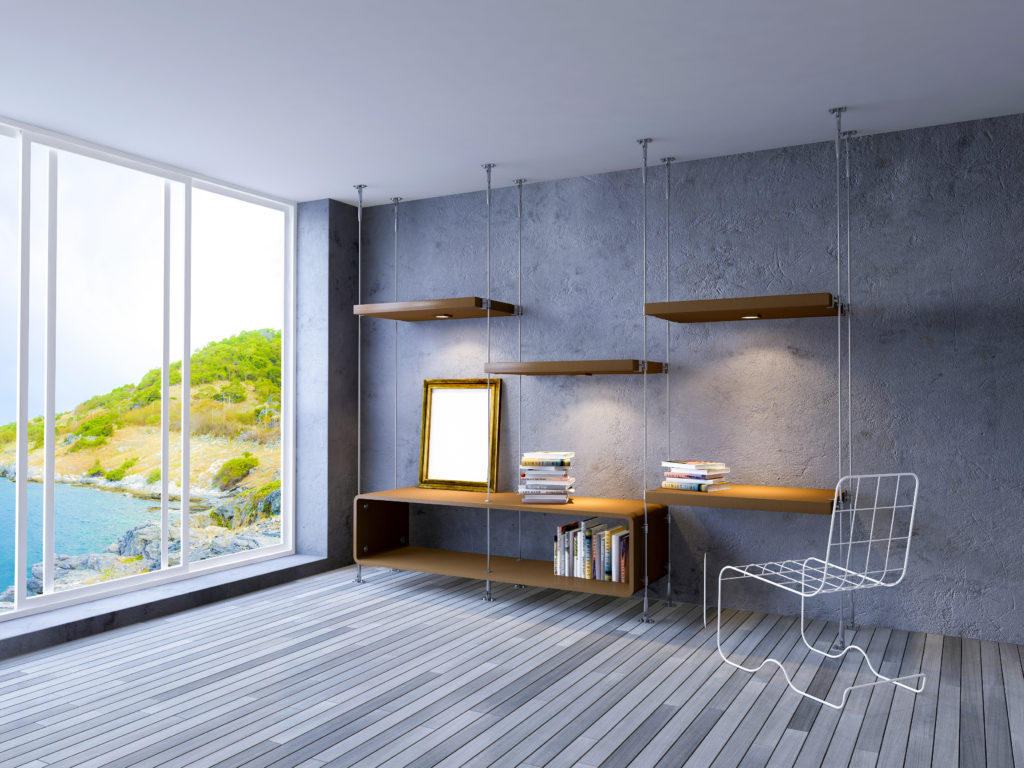
6. Tiny spaces make for great storage
Have an odd space you don’t know what to do with? Slot a skinny spice rack in that awkward gap between the fridge and the kitchen sink. Lay a ladder against a wall to hang up your clothes. Don’t be afraid- be creative and make use of dead space that could bring your home to life.
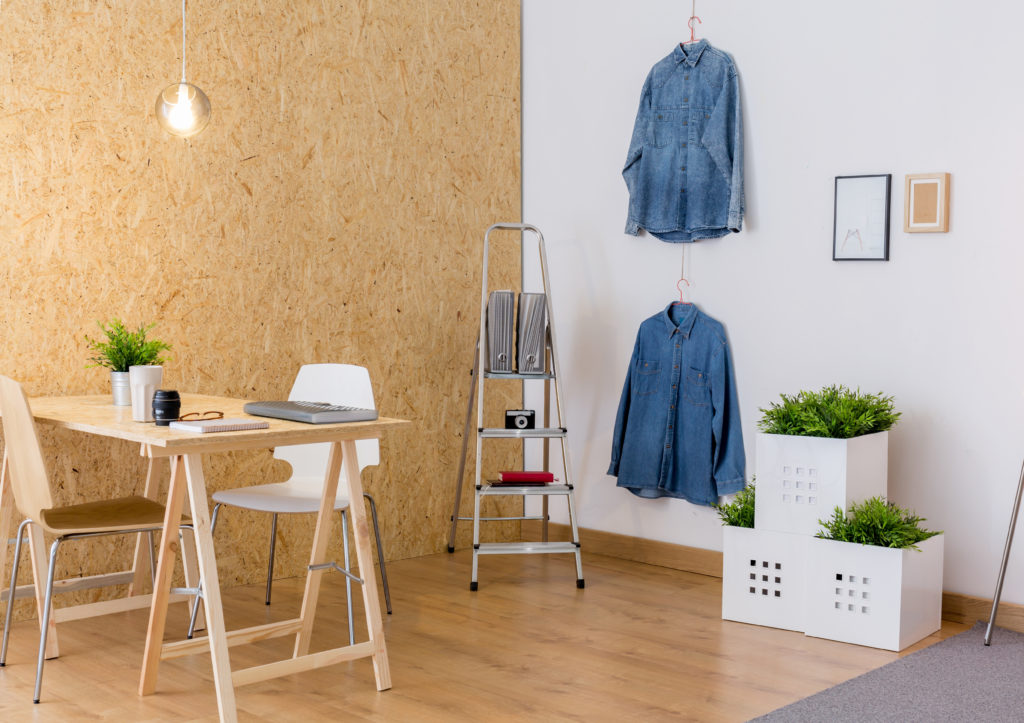
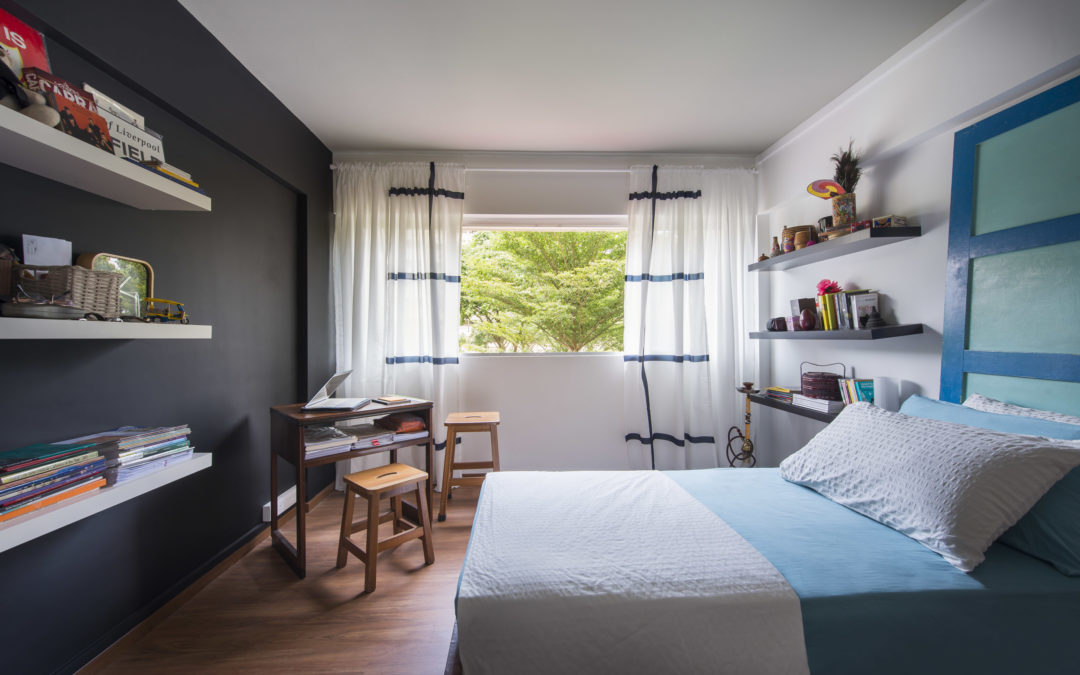
by Montie Mahtani | Jul 12, 2016 | Design Tips, Home Upkeep, Trending Styles
Finding the perfect place is to study is a huge task for many. A room should be conducive enough for you to focus on whatever it is you wish to absorb in your study session. Without the proper elements, you just might be wasting your time trying to concentrate. It is also important that room not be too cozy, especially if sleep becomes difficult for you. You don’t really want to end up snoozing in your attempt to seep knowledge. If you’re looking for a perfect study room & living room interior design in Singapore, these rooms should inspire you.
1. Most homes may not have enough space to have their own study room. Even though this is the case, setting up a study in your own bedroom is definitely not a bad idea. With this table set up facing the window, this position lets natural light in while you studying. This prevents strain on the eyes which artificial light is known for. Although there are some that may feel the table space is not enough, this will help you focus more less table space means clutter, reducing distractions.
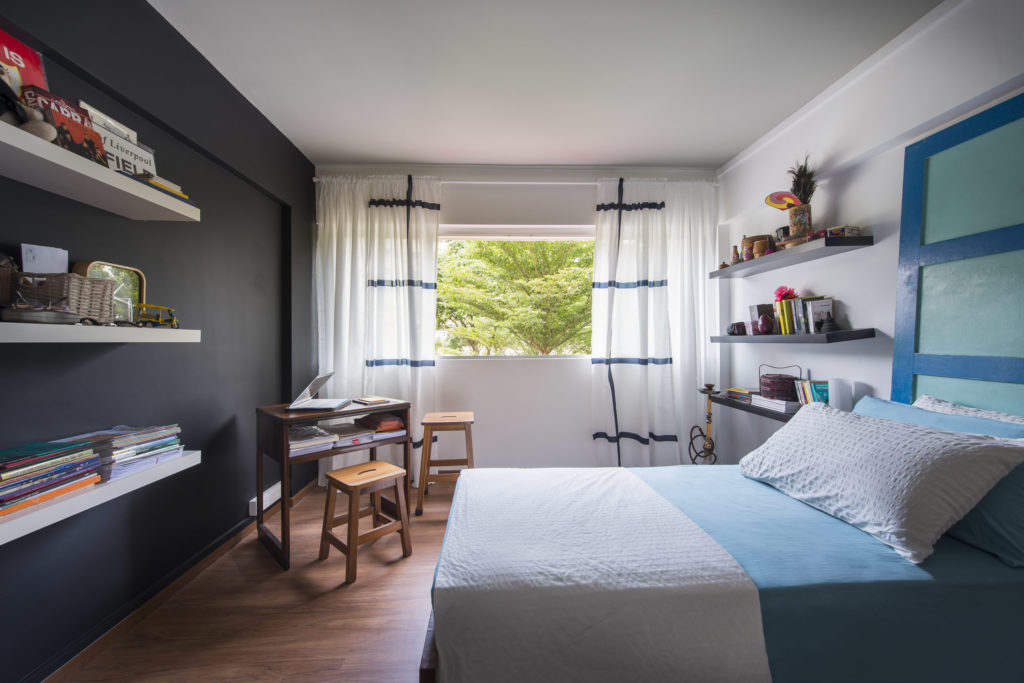
2. Draw inspiration from is this incredibly creative use of small space. With a few square meters available, elevating the bed on a platform had given the designer a chance to utilize the remaining platform area into a study corner. Having more table space means you won’t have difficulty fitting books and a laptop as compared to the first example. The light colors are positive reinforcement to stay awake during those long nights of hitting the books. Having blinds instead of curtains also helps in controlling the amount of natural light in your room for when you want to stay alert and when you are ready to rest for a bit.
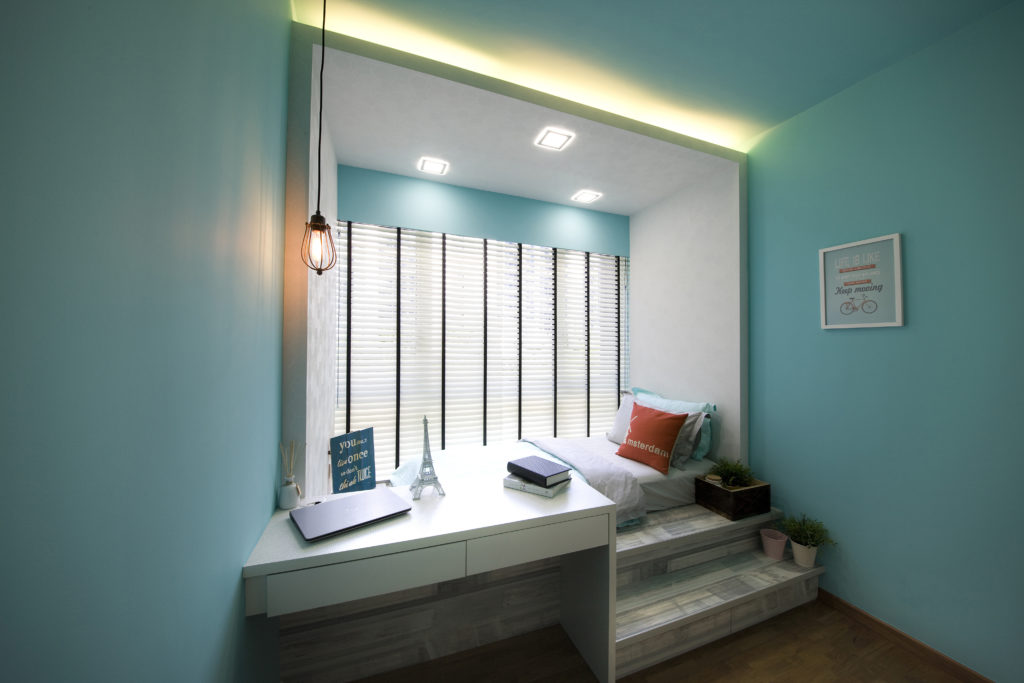
3. People have different ways in concentrating. While some need total peace and quiet, some are able to focus more when they aren’t confined in a room. If you feel that open spaces are more your thing, then this study space might be for you. An area set-up on the balcony allows you to take as much fresh air as you need during breaks of heavy reading. Studying in open spaces also helps prevent you from dozing off as you are further away from the bed or the atmosphere of your own bedroom.

4. If you’re lucky enough to have a room that you can dedicate to studying and working, then you might want to have this design on your inspiration board. With a table going around the entire room, you shouldn’t have to worry about running out of space for your books, papers, laptops and even a desktop. A set-up like this is also great when you want to host group studies as there is enough room for everyone to focus on their own and exchange ideas with as you are all seated in the center of the room. The cabinets are great storage options to keep your study/work-related items within reach in your productive space.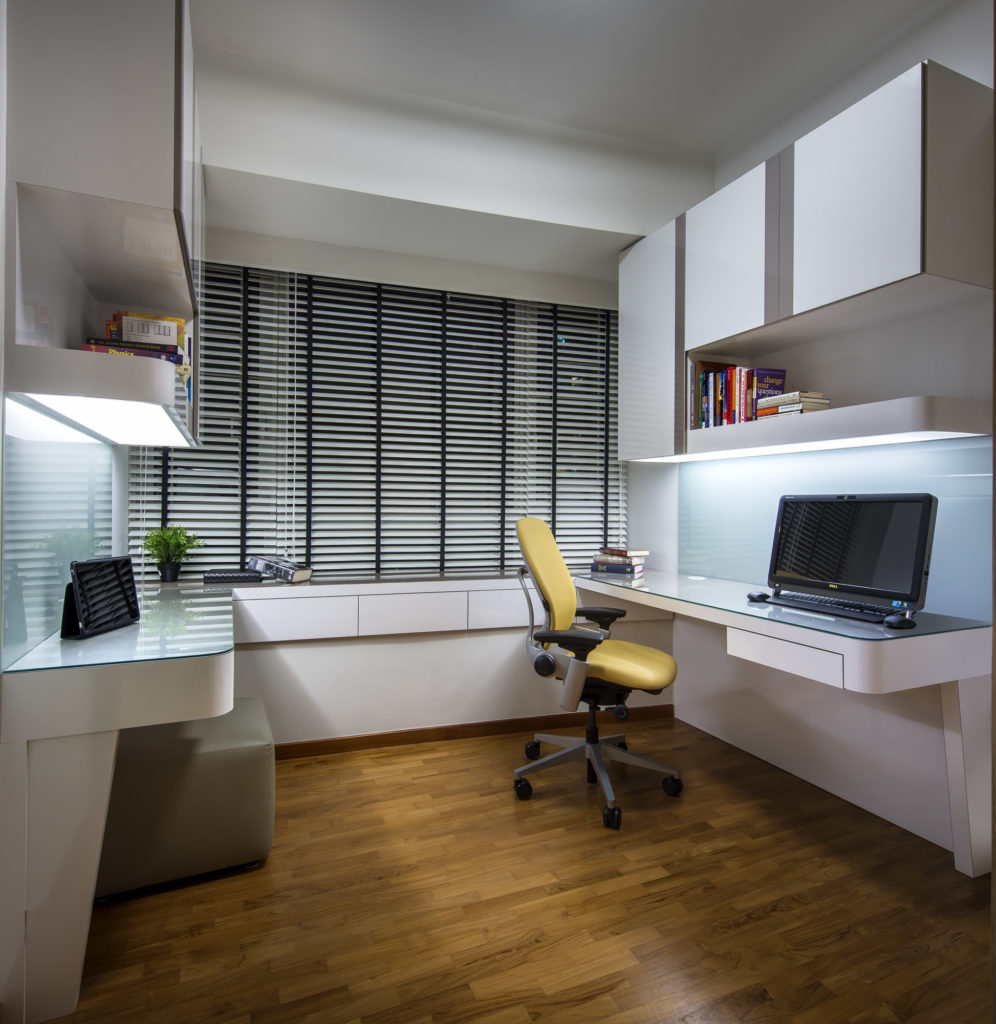
Page 1 of 612345...»Last »


























